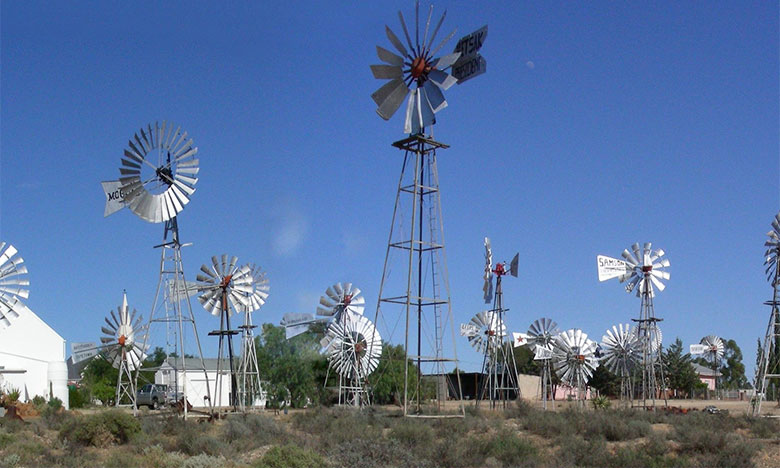Nimric. Star. Dandy. Hercules. Atlas. Mogul. Beatty Pumper. These are just some of the names of the 31 well-oiled wind pumps that scatter the grounds of the Fred Turner Museum in tiny Loeriesfontein, South Africa. Trying to think of the second-coolest thing to do in this dusty, windswept dorp (Afrikaans for “town”) may take a while. But there’s no doubt that the wind pump display is Loeriesfontein’s No. 1 attraction.
Before you ask, let’s clear one thing up. Windmills harness wind power to grind corn or wheat into flour. Wind pumps make use of exactly the same principle to draw groundwater to the surface. “Without wind pumps, much of South Africa’s parched hinterland wouldn’t be habitable,” explains Floors Brand, the chairman of the committee of volunteers that keeps the museum going.
The display at Loeriesfontein is one of only three in the world (the others are in Texas and Canada), and there’s a lot more to it than trippy photo ops of flotillas of steel sails navigating cloudless skies — although those are an obvious draw.
Entrance to the museum is free (but donations are very welcome), and it is open all year round, Monday to Saturday. That said, there are two very distinct “seasons.” In August and September, the museum is open from 9 to 5. This is when huge swaths of South Africa’s west coast erupt in a magnificent floral display of oranges, yellows, whites and pinks, drawing visitors from all over the world. It’s no accident that the Hantam region is named after a Khoi word meaning “mountains where the bulbs grow.”

